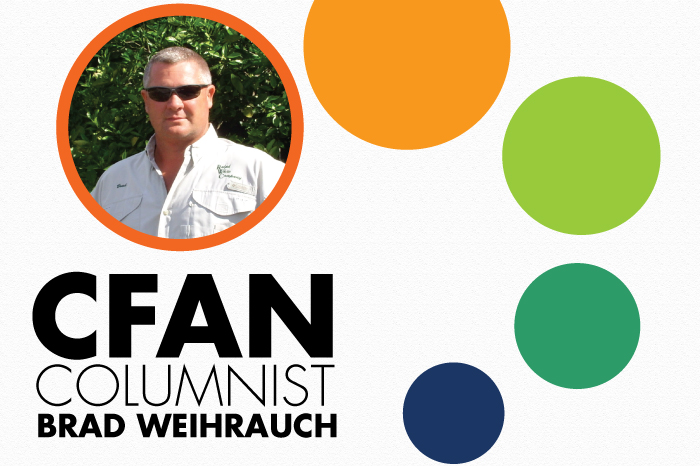My late grandfather used to tell me, “There’s no future in the past … but “there ARE lessons for the future from the past.” I was reminded of his words after riding citrus groves with St. Cloud growers, who were impressed by the size and health of our reset trees. [emember_protected custom_msg=”Click here and register now to read the rest of the article!”]
As the citrus industry battles the deadly bacterial disease Huanglongbing (HLB), we’ve put extra care into reset trees. Although there have been great strides in short-term HLB management, a cure remains elusive.
When I rode out with these growers, I recalled a bean crop that didn’t produce as well as anticipated. We had looked at the soil, seed, planting, watering, and daily notes – everything I could think of – to find the reason.
Citrus and beans are two separate crops, but they’ve had similar problems. In part, the condition of some mature citrus trees – and their decline – was because I waited too long to remove them before planting resets and adopting newer caretaking methods. Because the planting-to-picking time on row crops was shorter, the lesson was learned faster with beans, but it was as costly.
I encourage growers to make journals and keep notes. Order seed so they will be fresh and available at planting time. Have citrus resets on order and use the latest caretaking methods. Invest time in resets, rather than in exhausted trees. With the struggles growers face, we must work on our future, not sit around and worry about our past.
CREDITS
column by BRAD WEIHRAUCH
BIO: Brad Weihrauch is a Polk County native. He grew up around a family business of agriculture and customer service. After Winter Haven High School, he went on to complete his education at Polk Community College and Warner Southern. After serving 17 years in customer service for a large retailer, Weihrauch returned to his agriculture roots and founded RWC, an agri-service and management company, in 2002.
[/emember_protected]

